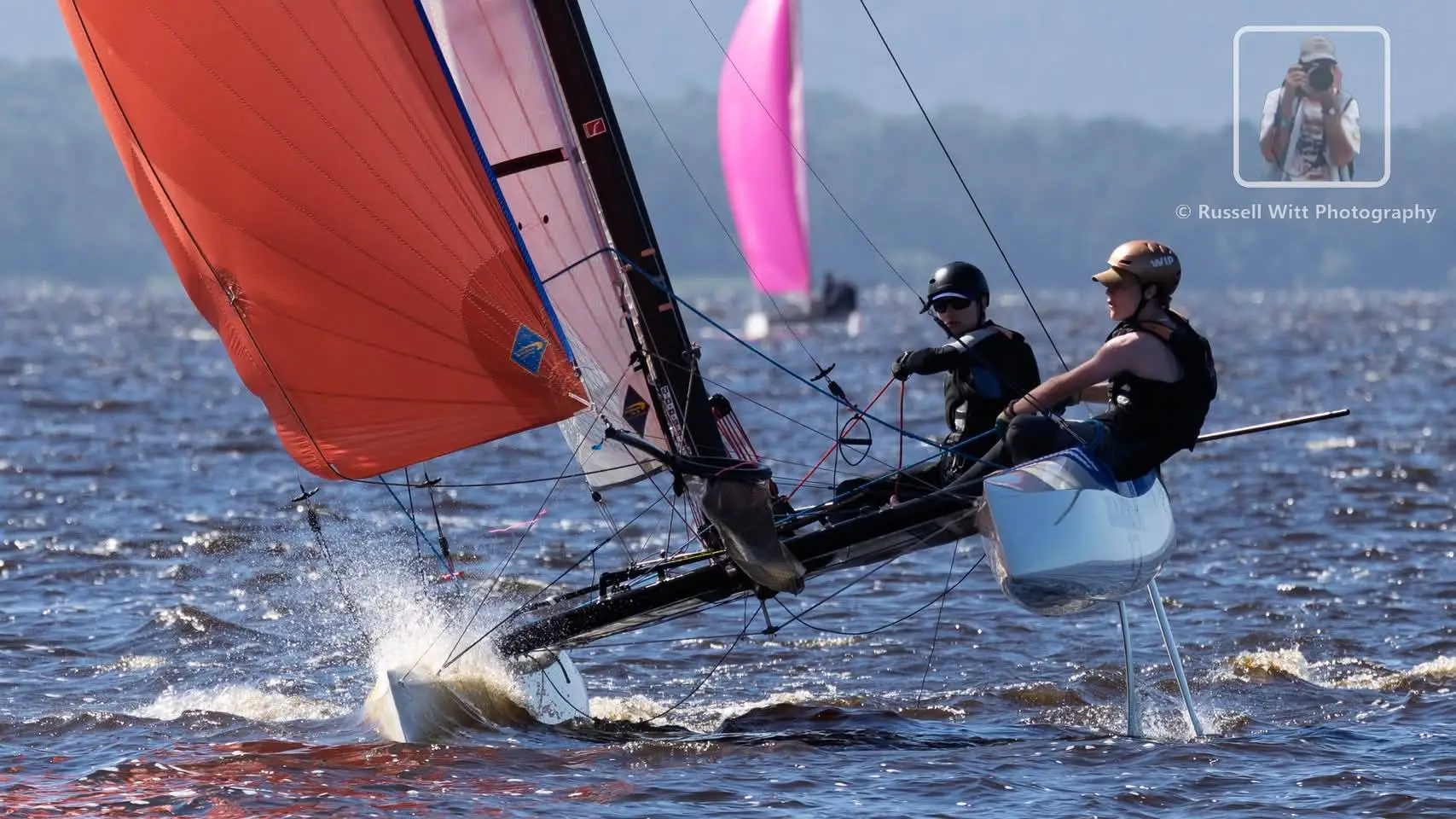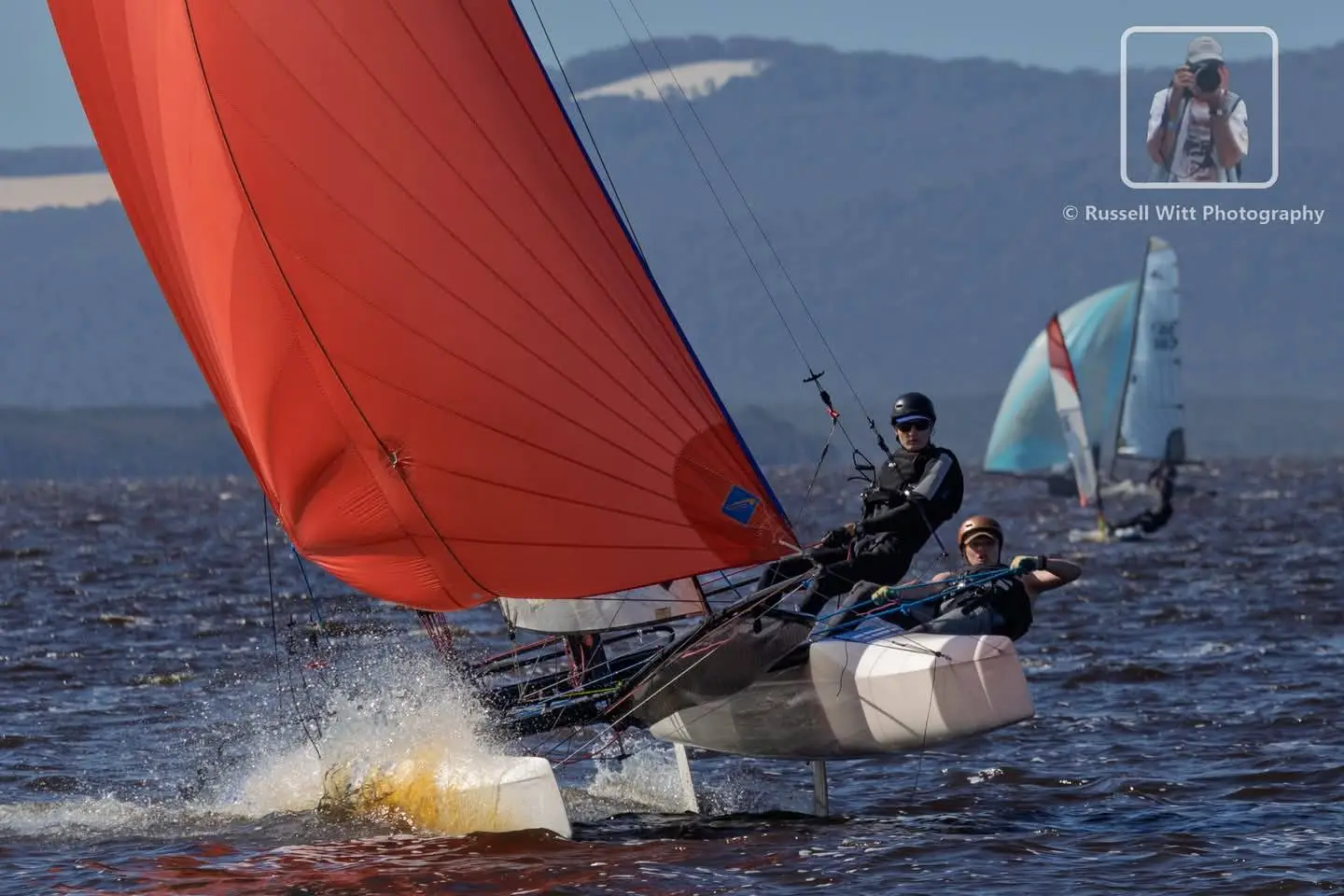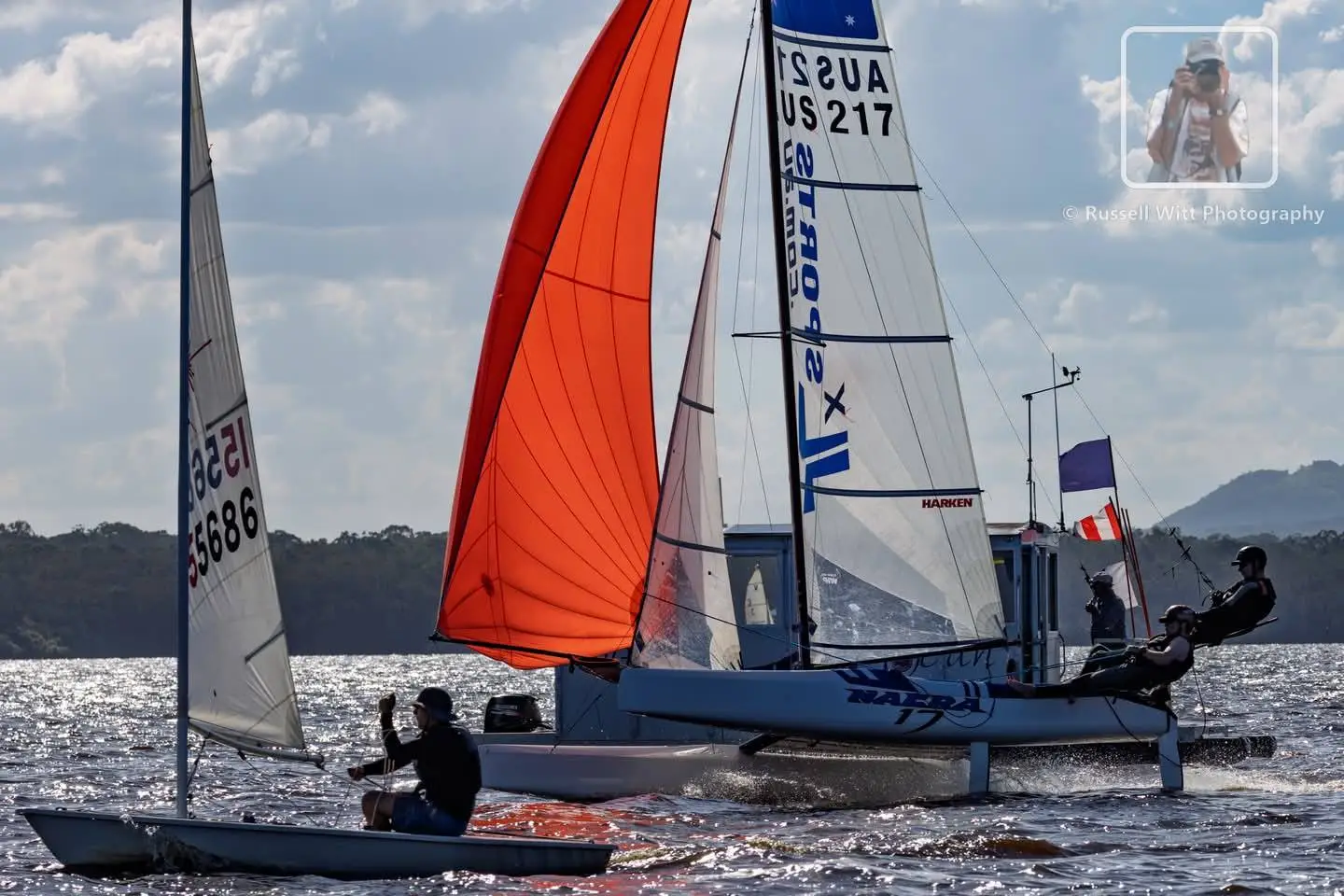Nacra 17: Why This "Old" Boat is My New Favorite Multihull
I recently raced a NACRA 17 Olympic from 2014. Despite being over a decade old and with no active class racing, it is still an extremely competitive boat. A week later I bought it. The Formula 16 is one of the best international multihull classes; it is a lightweight design that punches well above its weight, often beating competitive F18s (often cited as the benchmark high performance multihull). At only 5 metres long, there is only so much you can ask of the boat and we want to race at the front of the fleet. The 17 is the ultimate evolution that spawned from the design philosophy of the F16 class. Here are my thoughts on the boat and what makes it such a good design.
At 125kg, there is no possible way for us to transition into the stellar Formula 18 class. We want to race the F18s as closely as possible so we took a Nacra 17 to try out as a intermediate step between the F16 and F18. Despite the lack of time on the water before the event with this new boat, we finished second overall—beating some quick F18s in the process, achieving what we set out to do.

The boat’s intuitive feel, coupled with its responsive handling, made it so much fun to race. It’s a boat that requires focus and precision, but also rewards you with exceptional speed and control once you get to know it. I really think that this boat is close to a perfect design. Perhaps the only change I would make would be a modernised sail setup equipped with a decksweeper mainsail. It’s unfortunate that these boats are no longer supported with an active class. But the close racing with the F18s provides a close substitute.
The biggest departure from other classes such as F16 and F18 is the presence of curved foils for semi-foiling performance. There are three main types of foils - straight daggerboards, curves foils and full foils. Each has associated strengths and weaknesses.
Daggerboards, while the standard foil, are quite technical and take a lot of effort to get the most out of them since they provide no lift. They track well, especially upwind and allow for quick manoeuvres in tacks and gybes. The F18 and F16 classes use the daggerboard foil type.
Full foiling can be divided into two subtypes, automatic and manual foil control. Regardless, full foiling offers the highest speeds with the boat flying above the water at all times. It is the most difficult form of sailing you can do. The boat and crew must remain balanced as it accelerates harder and harder, leading to more lift on the foils, unbalancing the boat. Add in variable wind and waves and it is a very difficult task. The athleticism on display on a foiling boat is next to none. It is so mentally exhausting in the heavy days. Conversely, in little breeze, a full foiling boat is the slowest type as you are simply dragging massive foils around under the water.
Semi-foiling with curves boards strike a wonderful balance between the two other types. Curved foils do not offer much at all upwind as there is not enough lift to achieve anything useful, however there is not the risk of ultra low speeds in the event of lack of breeze. But it is downwind that the curved boars come alive. As the apparent wind builds and the boat speed goes up, lift is induced into the boat allowing for some killer speeds. It is impressive how much lift these boards can generate while still maintaining full balance and control. The curved boards paired with the lightweight and agile Nacra 17 make for an excellent combination. I can’t wait to see what kinds of speeds we can get out of it as we continue to race it.

The 17 feels like a scaled up F16, because that’s exactly what it is. Take an F16, make it longer, wider, given a bigger mast and therefore more sail area and that’s the 17. But the overall boat weight is kept to a minimum at 140 kg, a massive 40 kg less than the F18 class. As a result, we get a boat that accelerates well and has the power to maintain high average and top speeds, a true high performer. The dynamics of the boat is incredibly well-balanced and responsive in all conditions. The biggest strength is the acceleration directly out of manoeuvres, especially in gybes where hull fly to hull fly are pulled off seemingly effortlessly.
The Nacra 17 is the first boat I’ve raced with a carbon fiber mast, and the difference is incredible. While carbon masts are allowed in the F16 class, we didn’t have one, so this was a new experience for me. The carbon mast gives the boat an incredibly responsive feel, with less flex and a faster response to changes in wind conditions.
However, this responsiveness comes with a bit of a learning curve. The Nacra 17 requires constant attention to keep it in the optimal working window. Falling out of this window is far too easy which results in either a loss of speed or more commonly a loss of angle. I was particularly surprised by the amount of sheet load the mainsail requires with this mast setup, even in light winds compared to the F16 and F18.

We’re just scratching the surface with the Nacra 17, and I can already see how much potential it has for pushing the boundaries of multihull racing. The boat is fast, responsive, and just pure joy to sail. Whether it’s the thrilling sensation of semi-foiling downwind or the technical challenge of keeping everything in the right working range, the Nacra 17 offers something special for those who crave the highest level of performance in multihulls.